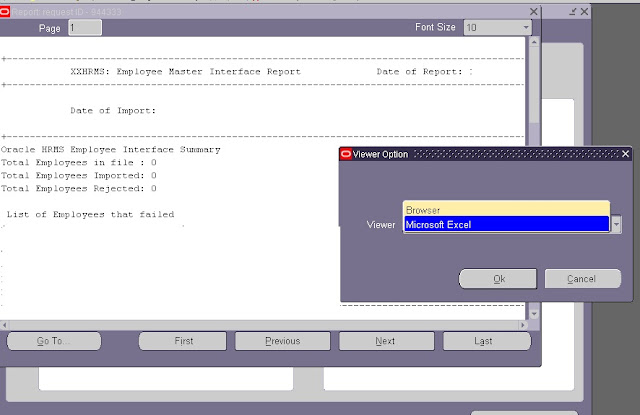How to show text format output in Excel in Oracle Applications
While defining any concurrent program, the
default output format is ‘Text’ as shown below, so the program will open the
report output in browser.
If we want to take the report output in Excel format, though the output format is 'Text', we need to do the following steps.
Go to System Administrator à Profile à System
Query for ‘Viewer%’
If we want to take the report output in Excel format, though the output format is 'Text', we need to do the following steps.
Go to System Administrator à Profile à System
Query for ‘Viewer%’
Go to Install à Viewer Options
Click
on Text -> Add one more line
with Text and give Mime Type as ‘application/vnd.ms-excel’ and description as
‘Microsoft Excel’ and check “Allow Native Client Encoding” check box and save
it. This will allow us to take the Text format output either in ‘Browser’ or
‘Excel’.
For testing, run any report
and view the output, Tools -> Copy File, it will give the Viewer Options LOV as shown below:
Note: The above illustration is for the programs
which we write in PL\SQL Program and report output format is in Text in
concurrent program definition.
Kindly provide your feedback.
Read more



















